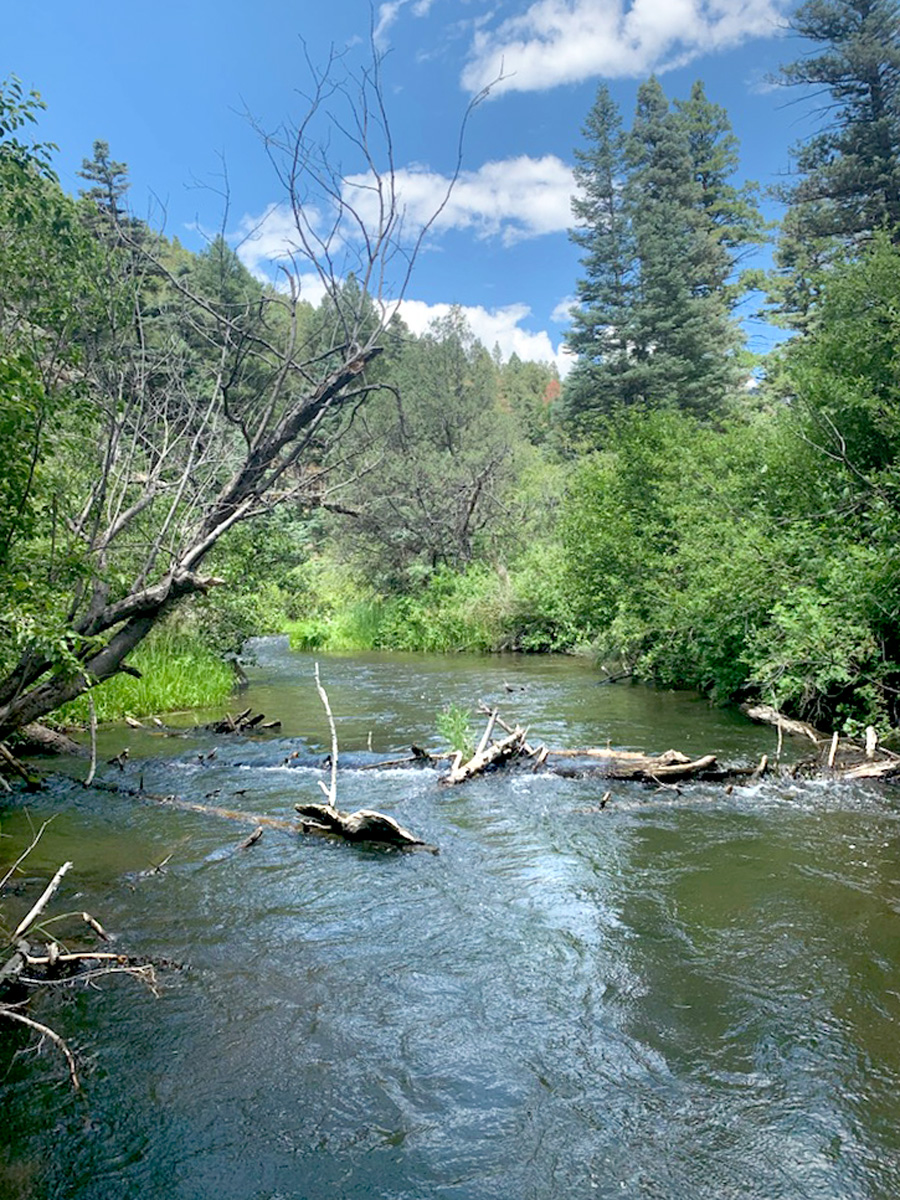
As we all know, northern New Mexico is where most of the state’s best trout fishing is located. Streams like the Pecos, Red, Rio Grande, Chama and, of course, the San Juan in the Farmington area are magnets for fishermen. Anglers love the Rio de los Pinos, especially in the fall, and New Mexicans view the Conejos in southern Colorado as our own. Just over the hill from Questa is Eagle Nest Lake, another favorite fishery for New Mexicans and out-of-staters alike.
The fishery many of us forget about is the stream flowing out of Eagle Nest, the Cimarron River. Like most New Mexican “rivers,” the Cimarron isn’t one. Averaging a mere 15 feet wide, it’s really a creek like the Red River in Questa. Like the Red, the Cimarron is lined with hook-grabbing vegetation that tests an angler’s skills. The Cimarron is full of brown trout, some surprisingly large.
The primary fishing area on the Cimarron is the 8 miles of stream between Eagle Nest dam and the town of Ute Park. The uppermost 1.4 miles from Tolby Campground down to the next bridge on Highway 64 is under Red Chile regulations, which means catch and release with single hook barbless lures and flies. This stretch has plenty of slow currents, deep holes, and undercut banks.
From there to Ute Park, a stretch that includes the Gravel Pit ponds, angling is under regular regulations allowing a 5-fish daily harvest on any legal tackle. Regardless of the regulations, the Cimarron is best fished with flies, due to its relatively shallow depths and preponderance of snags along the banks and in the stream itself. Dry flies work best, hoppers and ants, parachute adams, elk hair caddis (matching the abundant spruce moths in the canyon), little yellow stonefly patterns, and beetles. Trailing a small dropper nymph increases your chances, but remember the snags.
The Cimarron is locally notable for its high fish populations and prolific insect hatches. Nevertheless, inadequate winter flows and a consequent build-up of silt have diminished the fishery over time. In response, the Cimarron Watershed Alliance (CWA) embarked upon a restoration effort in 2021 with the intention of enhancing trout habitat throughout the canyon. Similar to the Red River restoration in Questa, the Cimarron restoration entailed reshaping the channel to improve its function at low flows.
The restoration has been largely funded by the New Mexico Environment Department’s River Stewardship Program, with the state Department of Game and Fish, and Trout Unlimited supporting CWA’s leadership. CWA is currently restoring the upper 7.4 miles of stream to wrap up the project; by the end of this summer, Cimarron fanatics will have a brand new stream that will produce more trout and insects while delivering more efficient flows to the ranches and farms near the town of Cimarron, on the edge of the Great Plains.
The next time you’re planning a fishing trip in the north, consider a forgotten gem right under your nose. With spectacular scenery and abundant public access, the Cimarron River promises some of the best dry fly fishing in the state.



